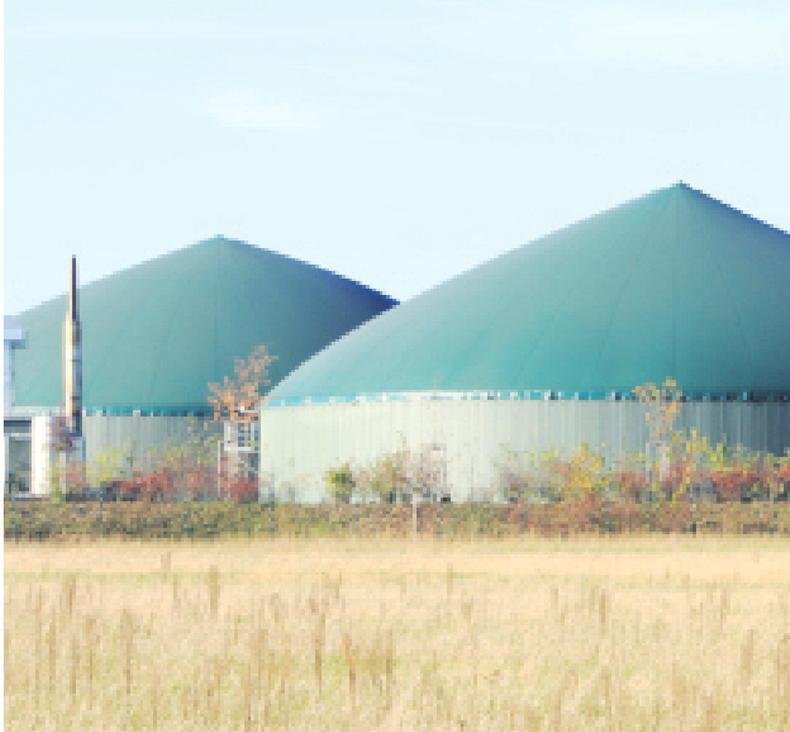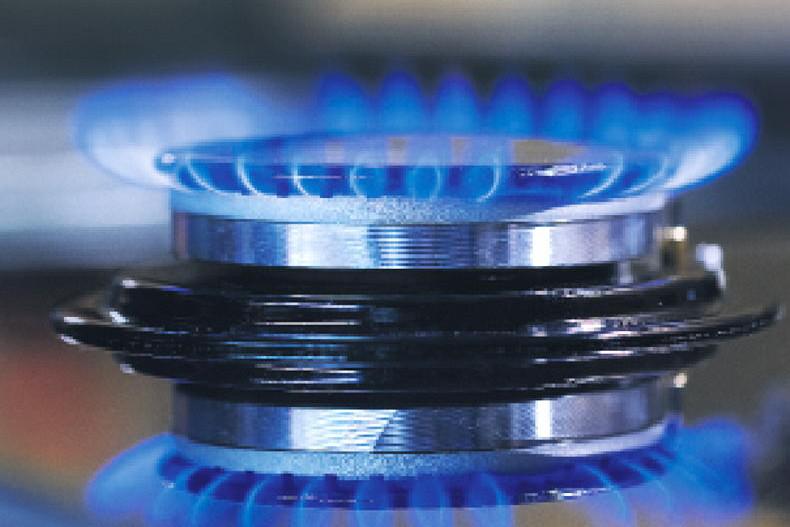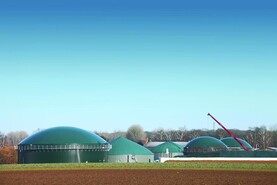A policy that has received significant attention in this paper since it was first proposed in 2019 has finally come into view.
This is the Renewable Heat Obligation (RHO), and its bill was published last week before the summer recess. The reason this particular policy has garnered so much focus is that, of all the renewable energy policies, it has the potential to be the most impactful for the agricultural sector.
The RHO will be the main support mechanism for new anaerobic digestion (AD) plants, which, by their very nature, are deeply rooted in agriculture. Unlike solar or wind farms, which typically only require land leases, farmers must still be farming for AD to work. Even detractors are beginning to see the potential usefulness of this system, as farmers face new barriers which threaten their livelihoods.
While farmers will be essential for supplying feedstock and using the resulting digestate, this policy could pave the way towards some degree of farmer ownership of the AD industry. However, this will demand innovation and coordinated, creative thinking, qualities not commonly associated with the agricultural sector, communities or the wider public when discussing AD development. Nevertheless, this policy could mark the beginning of a long-promised new industry in Ireland. This article will run you through the main things to know in the proposed bill.
What is the RHO?
Set to begin in 2026 and run until December 2045, the RHO will legally require fossil fuel suppliers in the heating sector to include a proportion of renewable energy in their fuel mix.
The RHO has two key goals, to boost the share of renewables in the heat sector and to support the production of indigenous Irish fuels to strengthen Ireland’s energy security.
Fossil fuel suppliers i.e. the obligated parties, must source renewable fuels such as biogas, bioliquids or biomass, or face financial penalties. The higher cost of these renewable fuels, which typically carry a premium, will be spread across all fuel users.
Rates
A similar obligation already exists for transport fuels, requiring that 25% of motor fuel placed on the Irish market is renewable. The RHO will begin at a significantly lower level, with an obligation of 1.5% in the first year, increasing to 3% in the second year. Initial projections had expected a starting rate as high as 10%. According to the bill, any further increases from year three onward will be based on additional market analysis.
What fuels are eligible
The scheme targets suppliers of fossil fuels such as natural gas, liquefied petroleum gas, mineral oils and solid fuels, including coal, coal products and petroleum coke.
Only suppliers whose annual fuel supply for heating exceeds 400 gigawatt hours (GWh) are considered obligated under the scheme. This threshold was chosen because it captures approximately 93% of the fossil fuel heating market, ensuring that the largest suppliers are responsible for implementing the obligation.
Trading caps
To provide flexibility and help reduce costs for consumers, the scheme allows fuel suppliers to trade renewable certificates instead of directly supplying renewable fuel. One certificate corresponds to one unit of renewable heating fuel.
However, to ensure a minimum level of actual renewable fuel use, a trading cap has been set at 50% of each supplier’s obligation. This means obligated parties must meet at least half of their requirement through direct supply, with the remaining portion allowed through certificate trading with other RHO account holders.
Buyout
If a fuel supplier fails to meet all or part of their renewable fuel requirement in a given year, the National Oil Reserves Agency (NORA) may collect a fee known as the buyout price in lieu of compliance. While the bill does not specify the exact amount, industry had expected it to be around €180 per megawatt-hour (MWh).
A separate levy of €0.001 per litre will apply to renewable heating fuels. Collected by NORA from suppliers, this charge will help fund the administration and operation of the scheme.
Irish biomethane
The RHO is intended to be the primary market incentive for developing Ireland’s indigenous biomethane sector, a commitment the Government reaffirmed in the bill’s publication. Biomethane is identified as a key renewable fuel under the scheme and is expected to play a significant role in diversifying Ireland’s gas supply. As the bill notes, “biomethane production activity will largely occur in rural areas, with the potential to develop a sector of significant scale to benefit the rural economy in Ireland”. Under the Climate Action Plan, Ireland must produce 5.7 terawatt-hours of biomethane annually by 2030.

To help level the playing field, the bill will introduce a partial certificate system. Under this measure, a certificate worth 50% of a full RHO certificate will be awarded for each unit of biomethane produced and used for heating within Ireland.
The RHO aims to create long-term demand and market certainty for biomethane developers. However, earlier consultations flagged a key risk that higher production costs in Ireland could lead to a surge in imports, undermining domestic supply. As a result, Ireland could end up as a key market for European biomethane without building its own AD infrastructure.
To help level the playing field, the bill will introduce a partial certificate system. Under this measure, a certificate worth 50% of a full RHO certificate will be awarded for each unit of biomethane produced and used for heating within Ireland.
The aim of the mechanism is not to give Irish biomethane an unfair advantage, but to ensure it can compete on equal terms with imports, which often benefit from state support in their country of origin. This measure will be subject to formal notification at EU level and will require justification for inclusion.
*The author Stephen Robb is currently involved in a family/community proposal for an anaerobic digestion facility in Co Donegal.
Comment
Ireland consumes approximately 50,000 GWh of fuel annually for heating. A 1.5% renewable heat obligation would require about 750 GWh of renewable energy in the first year. However, this target is spread across all heating fuels. In Ireland, around 44% of heating fuel comes from oil and 40% from natural gas, with each fuel type expected to meet its own share of the obligation. Even with certificate trading, meeting the target for oil could prove particularly challenging. This may lead to increased imports of hydrotreated vegetable oil (HVO), a fuel that raises concerns around fraud and traceability.
The proposed cap on inter-fuel certificate trading is a welcome measure, as it ensures renewable gases are actually used within the gas sector. Still, the key question remains: how much real demand will this policy create?
In 2023, natural gas accounted for roughly 19,750 GWh of heat energy. Applying the 1.5% obligation would require about 296 GWh of renewable gas, equivalent to just five AD plants producing 60 GWh each. And that’s before accounting for imports, inter-fuel trading or buyouts.
The responsibility for sourcing this renewable fuel lies with the fuel suppliers. Unlike the electricity sector, where long-term power purchase agreements are standard, very few players in the gas sector can offer long-term renewable gas purchase agreements. This market is complex, high-risk, and difficult to finance, making project bankability a major barrier. With potential 20% capital grants towards AD plants coming, this would do little to offset the high cost of biomethane production.
As it stands, it is difficult to see how the obligation won’t ultimately result in higher fuel prices for consumers. In the coming months, it will become clearer whether this policy is workable. Time will tell.
A policy that has received significant attention in this paper since it was first proposed in 2019 has finally come into view.
This is the Renewable Heat Obligation (RHO), and its bill was published last week before the summer recess. The reason this particular policy has garnered so much focus is that, of all the renewable energy policies, it has the potential to be the most impactful for the agricultural sector.
The RHO will be the main support mechanism for new anaerobic digestion (AD) plants, which, by their very nature, are deeply rooted in agriculture. Unlike solar or wind farms, which typically only require land leases, farmers must still be farming for AD to work. Even detractors are beginning to see the potential usefulness of this system, as farmers face new barriers which threaten their livelihoods.
While farmers will be essential for supplying feedstock and using the resulting digestate, this policy could pave the way towards some degree of farmer ownership of the AD industry. However, this will demand innovation and coordinated, creative thinking, qualities not commonly associated with the agricultural sector, communities or the wider public when discussing AD development. Nevertheless, this policy could mark the beginning of a long-promised new industry in Ireland. This article will run you through the main things to know in the proposed bill.
What is the RHO?
Set to begin in 2026 and run until December 2045, the RHO will legally require fossil fuel suppliers in the heating sector to include a proportion of renewable energy in their fuel mix.
The RHO has two key goals, to boost the share of renewables in the heat sector and to support the production of indigenous Irish fuels to strengthen Ireland’s energy security.
Fossil fuel suppliers i.e. the obligated parties, must source renewable fuels such as biogas, bioliquids or biomass, or face financial penalties. The higher cost of these renewable fuels, which typically carry a premium, will be spread across all fuel users.
Rates
A similar obligation already exists for transport fuels, requiring that 25% of motor fuel placed on the Irish market is renewable. The RHO will begin at a significantly lower level, with an obligation of 1.5% in the first year, increasing to 3% in the second year. Initial projections had expected a starting rate as high as 10%. According to the bill, any further increases from year three onward will be based on additional market analysis.
What fuels are eligible
The scheme targets suppliers of fossil fuels such as natural gas, liquefied petroleum gas, mineral oils and solid fuels, including coal, coal products and petroleum coke.
Only suppliers whose annual fuel supply for heating exceeds 400 gigawatt hours (GWh) are considered obligated under the scheme. This threshold was chosen because it captures approximately 93% of the fossil fuel heating market, ensuring that the largest suppliers are responsible for implementing the obligation.
Trading caps
To provide flexibility and help reduce costs for consumers, the scheme allows fuel suppliers to trade renewable certificates instead of directly supplying renewable fuel. One certificate corresponds to one unit of renewable heating fuel.
However, to ensure a minimum level of actual renewable fuel use, a trading cap has been set at 50% of each supplier’s obligation. This means obligated parties must meet at least half of their requirement through direct supply, with the remaining portion allowed through certificate trading with other RHO account holders.
Buyout
If a fuel supplier fails to meet all or part of their renewable fuel requirement in a given year, the National Oil Reserves Agency (NORA) may collect a fee known as the buyout price in lieu of compliance. While the bill does not specify the exact amount, industry had expected it to be around €180 per megawatt-hour (MWh).
A separate levy of €0.001 per litre will apply to renewable heating fuels. Collected by NORA from suppliers, this charge will help fund the administration and operation of the scheme.
Irish biomethane
The RHO is intended to be the primary market incentive for developing Ireland’s indigenous biomethane sector, a commitment the Government reaffirmed in the bill’s publication. Biomethane is identified as a key renewable fuel under the scheme and is expected to play a significant role in diversifying Ireland’s gas supply. As the bill notes, “biomethane production activity will largely occur in rural areas, with the potential to develop a sector of significant scale to benefit the rural economy in Ireland”. Under the Climate Action Plan, Ireland must produce 5.7 terawatt-hours of biomethane annually by 2030.

To help level the playing field, the bill will introduce a partial certificate system. Under this measure, a certificate worth 50% of a full RHO certificate will be awarded for each unit of biomethane produced and used for heating within Ireland.
The RHO aims to create long-term demand and market certainty for biomethane developers. However, earlier consultations flagged a key risk that higher production costs in Ireland could lead to a surge in imports, undermining domestic supply. As a result, Ireland could end up as a key market for European biomethane without building its own AD infrastructure.
To help level the playing field, the bill will introduce a partial certificate system. Under this measure, a certificate worth 50% of a full RHO certificate will be awarded for each unit of biomethane produced and used for heating within Ireland.
The aim of the mechanism is not to give Irish biomethane an unfair advantage, but to ensure it can compete on equal terms with imports, which often benefit from state support in their country of origin. This measure will be subject to formal notification at EU level and will require justification for inclusion.
*The author Stephen Robb is currently involved in a family/community proposal for an anaerobic digestion facility in Co Donegal.
Comment
Ireland consumes approximately 50,000 GWh of fuel annually for heating. A 1.5% renewable heat obligation would require about 750 GWh of renewable energy in the first year. However, this target is spread across all heating fuels. In Ireland, around 44% of heating fuel comes from oil and 40% from natural gas, with each fuel type expected to meet its own share of the obligation. Even with certificate trading, meeting the target for oil could prove particularly challenging. This may lead to increased imports of hydrotreated vegetable oil (HVO), a fuel that raises concerns around fraud and traceability.
The proposed cap on inter-fuel certificate trading is a welcome measure, as it ensures renewable gases are actually used within the gas sector. Still, the key question remains: how much real demand will this policy create?
In 2023, natural gas accounted for roughly 19,750 GWh of heat energy. Applying the 1.5% obligation would require about 296 GWh of renewable gas, equivalent to just five AD plants producing 60 GWh each. And that’s before accounting for imports, inter-fuel trading or buyouts.
The responsibility for sourcing this renewable fuel lies with the fuel suppliers. Unlike the electricity sector, where long-term power purchase agreements are standard, very few players in the gas sector can offer long-term renewable gas purchase agreements. This market is complex, high-risk, and difficult to finance, making project bankability a major barrier. With potential 20% capital grants towards AD plants coming, this would do little to offset the high cost of biomethane production.
As it stands, it is difficult to see how the obligation won’t ultimately result in higher fuel prices for consumers. In the coming months, it will become clearer whether this policy is workable. Time will tell.







 This is a subscriber-only article
This is a subscriber-only article










SHARING OPTIONS: